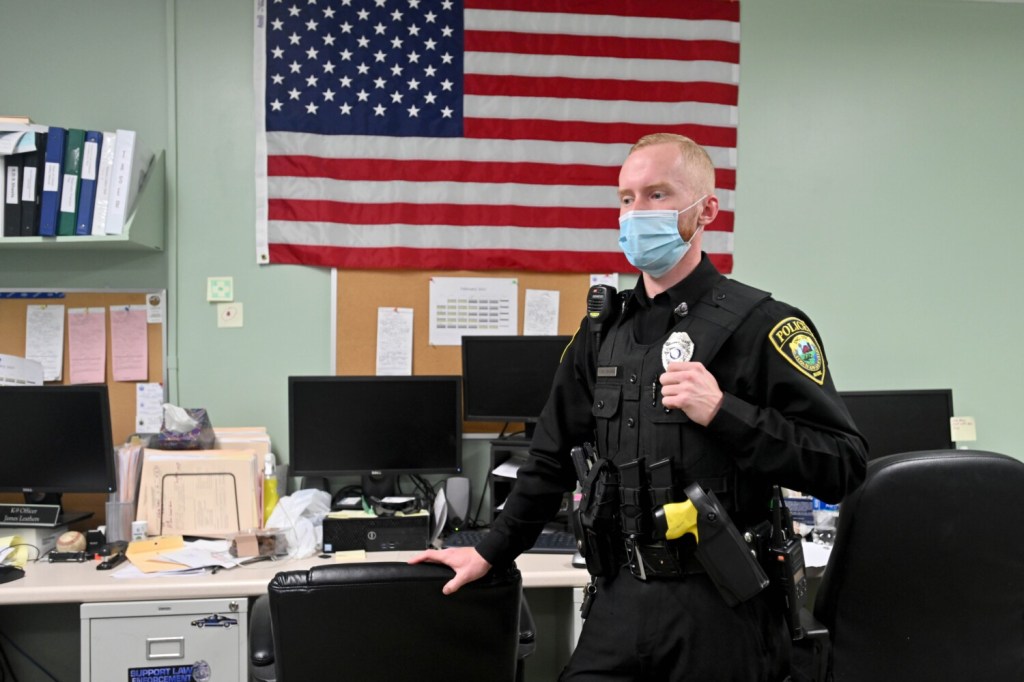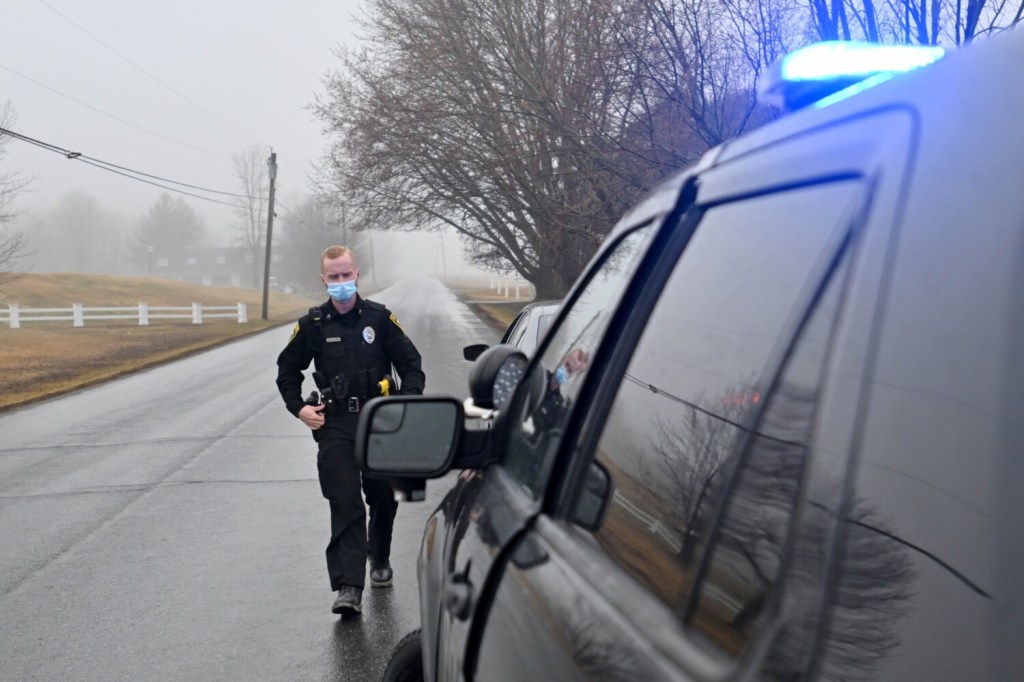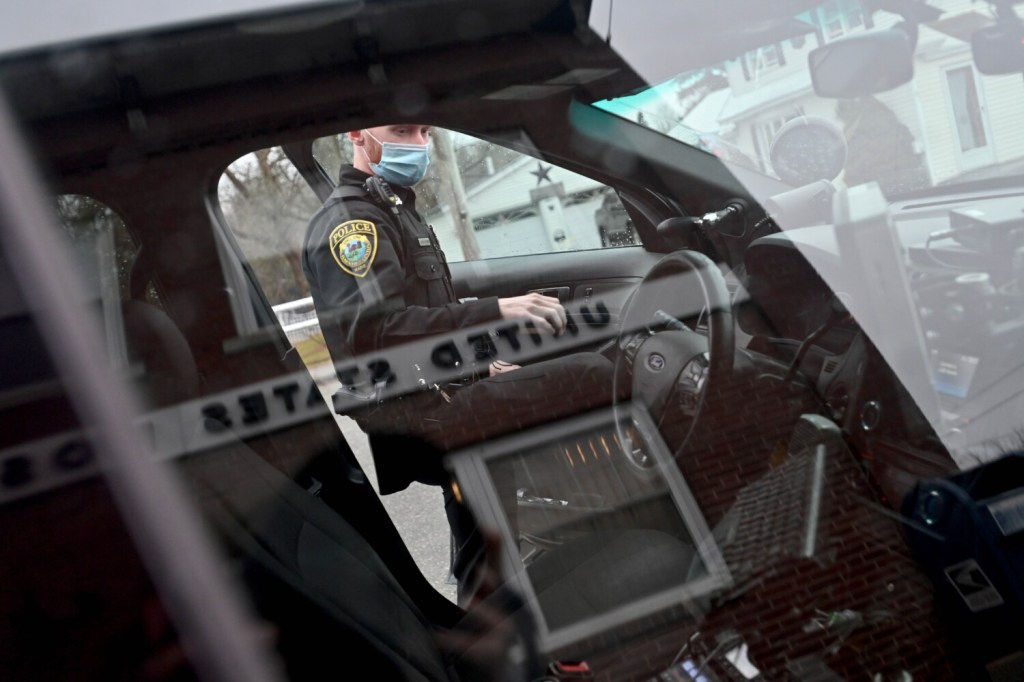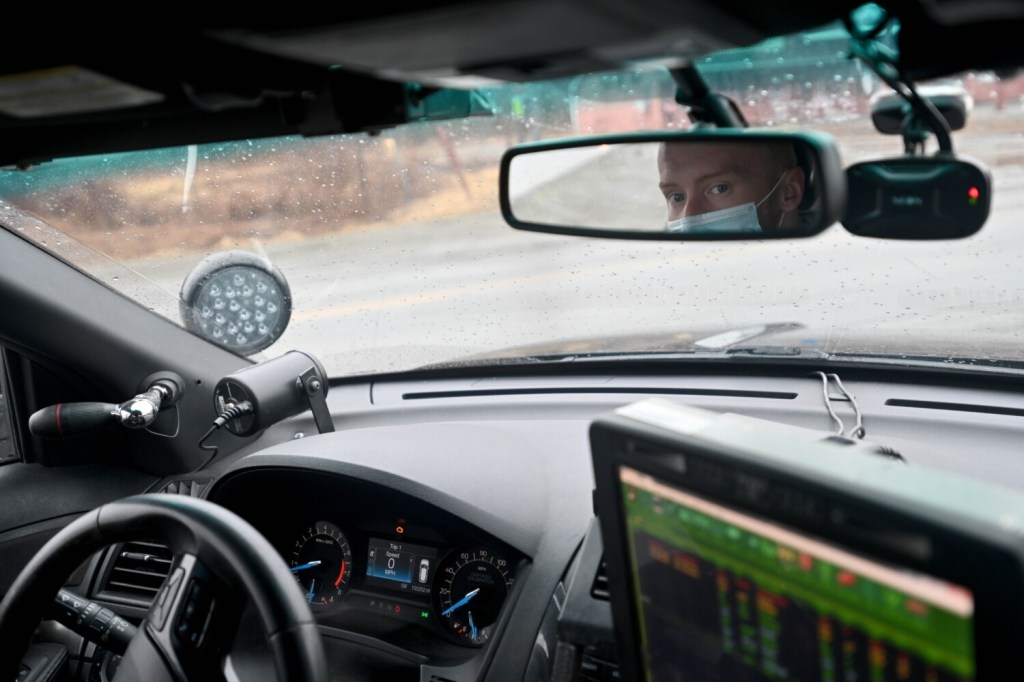After operating in emergency status for most of the winter, many local law enforcement agencies are back using more familiar patrol practices.
The result has varied by department. Arrests are up in some municipalities, down in others. Traffic stops are up in many departments as complaints of reckless driving have increased.
For many local police departments, the recent change is the result of going from emergency measures to new normal routines.
“Emergency mode was probably doing our job while being respectful of everyone’s different views and concerns with the virus,” Clinton police Chief Stanley “Rusty” Bell said. “We were avoiding unnecessary contact with the public.”
Departments in Clinton, Fairfield, Oakland and Waterville recently returned to a more visible status in late February as COVID-19 cases dropped, vaccinations became more prevalent and a concern over reckless driving surfaced statewide. Departments also got a better understanding of how to do work amid the pandemic. Some departments, such as Pittsfield and Winslow, never explicitly went into an emergency mode, but made pandemic-related safety changes like everyone else.
All departments still use COVID-19 precautions such as masking and social distancing.
The Maine Center for Disease Control & Prevention did not issue official guidance for law enforcement, and Edward Tolan, executive director of the Maine Chiefs of Police Association, said the association did not issue any, either. However, during regular meetings, many chiefs across the state discussed an increase in traffic policing, Tolan said.
“It wasn’t like we did a poll throughout the state, but we just had a recent discussion at a recent board meeting,” Tolan said. “We just had a discussion. … It’s up to the individual department of what they do.”
Kennebec County District Attorney Maeghan Maloney pointed to the number of arraignment slots available with the lower prevalence of COVID-19 in communities as an indicator for a transition to more active law enforcement. The court is adding an extra month of jury trials to help get through the backlogs. Jury trials are slated for May, June and now into July.

Officer Joshua Chouinard pulls over a motorist March 26 in Clinton. Michael G. Seamans/Morning Sentinel
“The court has been able to meet all arraignment numbers while still charging for criminal conduct,” Maloney said. “The court is calling in a larger than usual group of people to sit as a jury and will be able to draw on that group over a three-month period instead of over a one month period.”
The Waterville Police Department operated in a more emergency-response manner from March 16 to May 15, 2020, and again from Nov. 17, 2020, to Feb. 24, 2021. Waterville Deputy Chief Bill Bonney wrote in an email that although officers prefer to be in the community, the restrictions were necessary and similar to what other departments did.
In Waterville, arrests immediately went up after the department returned to its normal procedures in late February.
In 2021, according to the city’s police log, Waterville police made 38 arrests from Jan. 1 -Feb. 24 while still in the emergency mode. They made 40 arrests from Feb. 25-March 23.
In 2020, Waterville police made 99 arrests from Jan. 1 to Feb. 24, and 45 arrests from Feb. 23 to March 23.
“During the times when we were operating under emergency response only, we were only responding to emergencies and making arrests as necessary to provide for personal/public safety,” Bonney wrote. “When the officers are allowed to go back out into the community and conduct proactive policing — versus reactive in the emergency response-only mode — they are allowed to engage in self-initiated activity based on their training and experience. This results in them making arrests based upon their own observations and information obtained from the public.”
The Clinton Police Department saw a decrease in calls — 36,713 calls in 2019 dropped to 22,410 in 2020.
Above all, many local departments are dealing with the natural seasonal change of more people being out with spring weather.
Oakland Chief Mike Tracy said that his department is operating in a more proactive way, but still with COVID-19 protocols. The entire patrol has been vaccinated, Tracy said. Throughout the pandemic, Tracy urged his department to make more contact over the phone, and there has been less self-initiated contact by officers.
“We’re not back full-bore,” Tracy said, “but we’re also not hiding in the station, either.”
However, year-to-year arrests may be down in some municipalities because arraignment dates in court are still restricted, according to Fairfield police Chief Tom Gould. Nonviolent criminal cases are being held until courts fully reopen to prepandemic levels.

Officer Joshua Chouinard gets in his police cruiser March 26 as he begins his shift in Clinton. Michael G. Seamans/Morning Sentinel
Clinton’s Chief Bell gave officers flexibility in determining whether to make stops or not, as did Pittsfield, according to Chief Harold Bickmore, and the Kennebec County Sheriff’s Office and other departments.
“I did not issue any orders directing deputies to not conduct traffic stops during our ongoing COVID issue,” Kennebec County Sheriff Ken Mason wrote in an email. He said his department incorporated COVID-19 precautions but did not deviate from its normal operating procedures. “I did, however, ask my staff and other law enforcement agencies within the county not to actively look for individuals wanted on warrants that were not violent crimes against people.”
Somerset County Sheriff Dale Lancaster said the Somerset County Jail saw a 28.3% decrease in bookings from 2019 to 2020. He said that is, in part, the product of the sheriff’s office request to enforce law by issuing a summons rather than making physical arrests for minor crimes. All inmates are quarantined for seven days and tested for COVID-19 before being put into the general population. As the jail and the sheriff’s office play hand in hand, Lancaster directed deputies to follow the same protocols.
“We are still requiring alternatives for arrest, if possible, because our inmates aren’t vaccinated,” Lancaster said. Somerset County’s rate of COVID-19 is higher than Lancaster is comfortable with for removing protocols. There have been no cases inside the Somerset County Jail.
“I feel a responsibility at work for keeping my staff and inmates from getting infected from COVID,” Lancaster said.
Starting in April 2020, at the outset of the pandemic, the Fairfield Police Department split its staff physically between the police station and the community center.
As a result of the stay-at-home order related to the pandemic, April was the department’s least busy month on record, according to statistics compiled by Gould. By June 1, the entire department staff returned to the police station with safety restrictions.
Earlier this year, on Feb. 25, Gould issued a directive to return the department to its normal operations.
“Department members are still required to follow all state guidelines, and we are still monitoring employees for signs of the virus,” Gould said. “So far, we have had no employees infected.”
Send questions/comments to the editors.







Comments are no longer available on this story